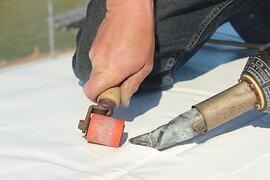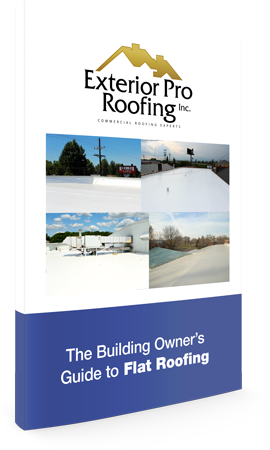Hot air welds are among the best in the commercial roofing industry. They are permanent, water proof, and last as long as the roofing material does.

1. What is hot air or heat welding?
Hot air welding is a technique used to create seams and fuse sheets of PVC roofing membrane together. Heated air is blown between two pieces of membrane and the heat changes the membrane into a softened, semi-solid state. A roller is then used to apply pressure and the two sheets blend together. Once the PVC seam cools off ( 10 seconds or less) the two pieces of membrane are permanently fused together.
2. Why is it better and What are the advantages?
Hot air welds are permanent, watertight, come to full weld strength almost immediately, and don't rely on glue or caulking. Once the roofing sheets are welded together the roof becomes monolithic or one continuous sheet.
Seams that do rely on glue or adhesive are prone to failure over time because moisture deteriorates glue in the harsh roof top environment.
3. How is it done?
Hot air welding can be done either by a hand held welder or a walk behind welder. The hand held welders are used to do trim work like stack flashings and HVAC curbs. The weld time with a hand welder is approximately 1-3 feet per minute. A walk behind welder is for seaming in long seams where roofing sheets overlap or parapet walls sheets. The walk behind welder vary in size and power but can usually weld in the 7- 15 feet per minute.
Hot air welding is not like soldering or torching material, no torch or flame is every used in hot air welding, just heated air. Hot air welding is very safe and reliable.
Because of their durability and watertightness, hot air welds on single ply membranes have become a flat roofing industry standard.







